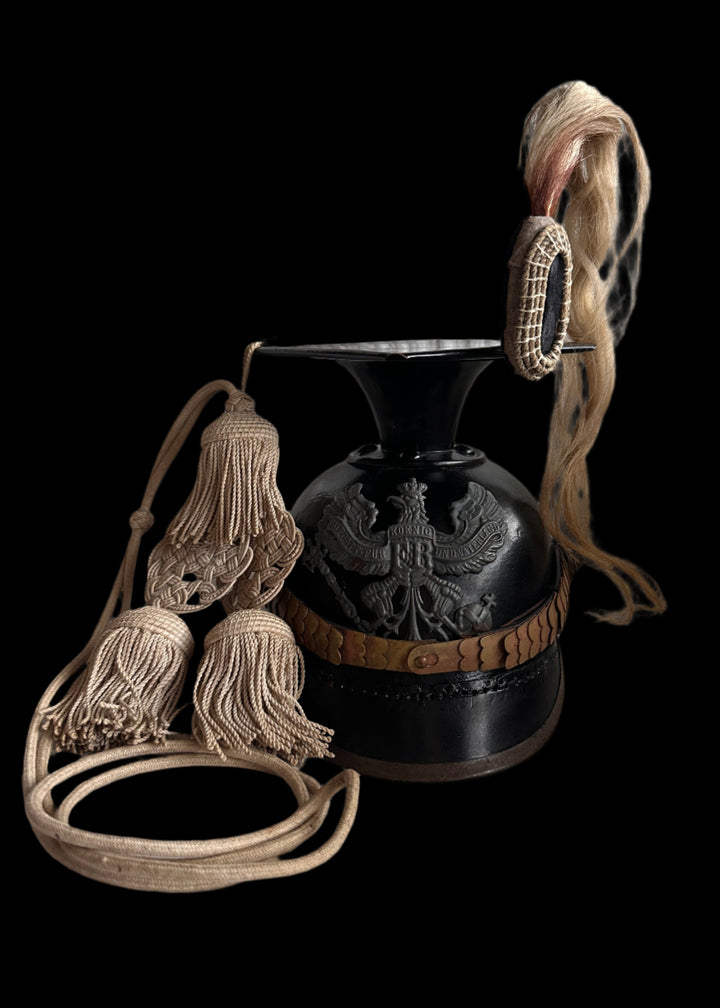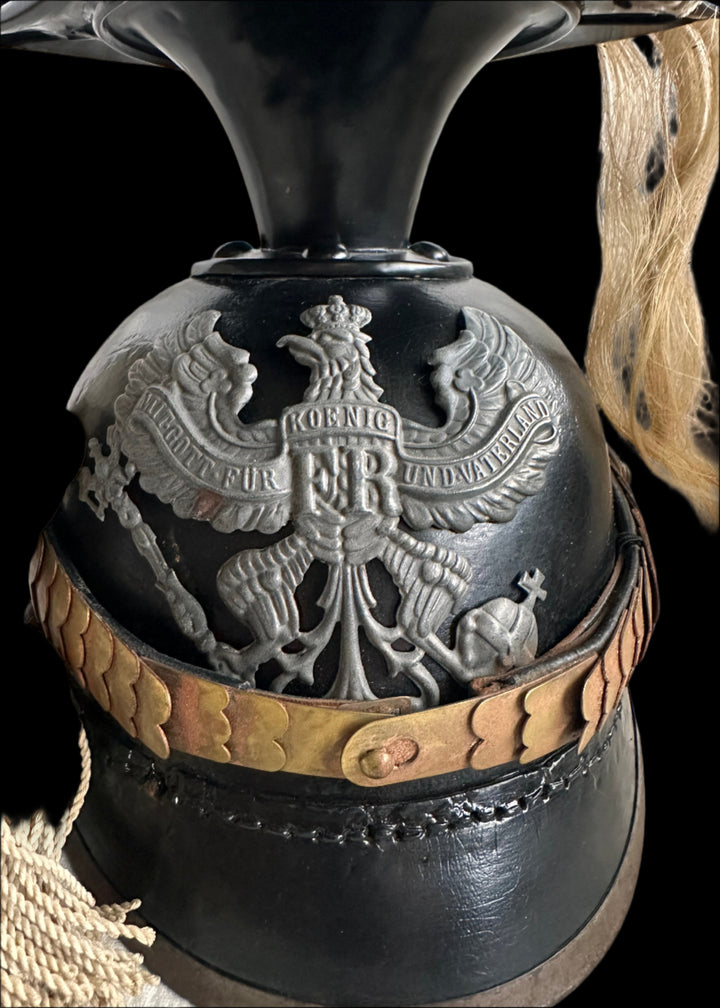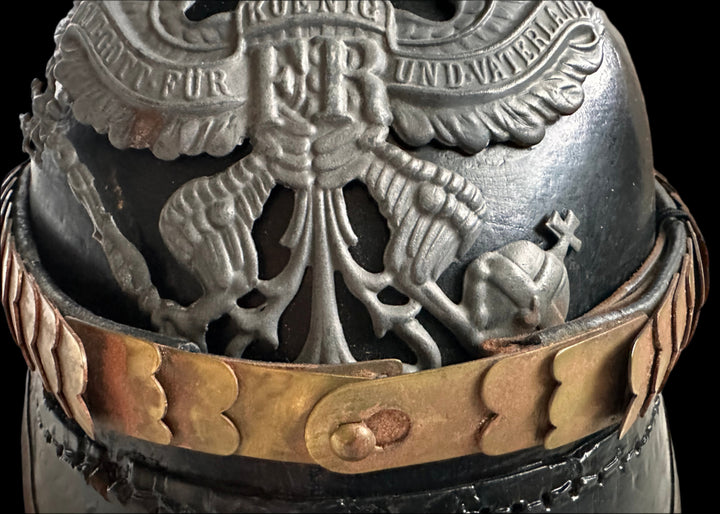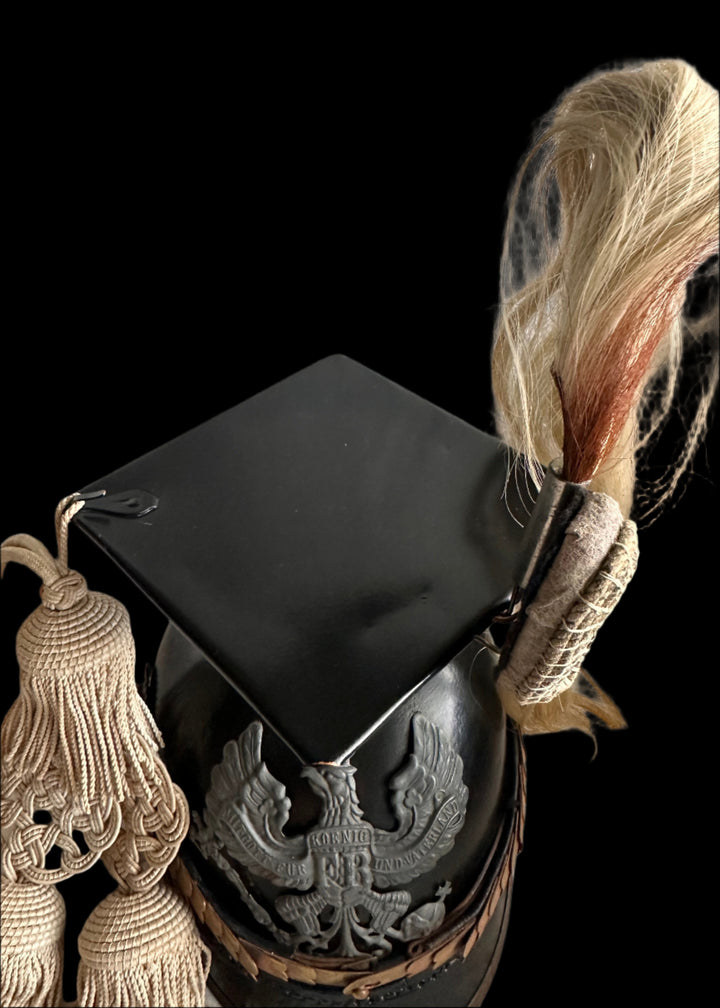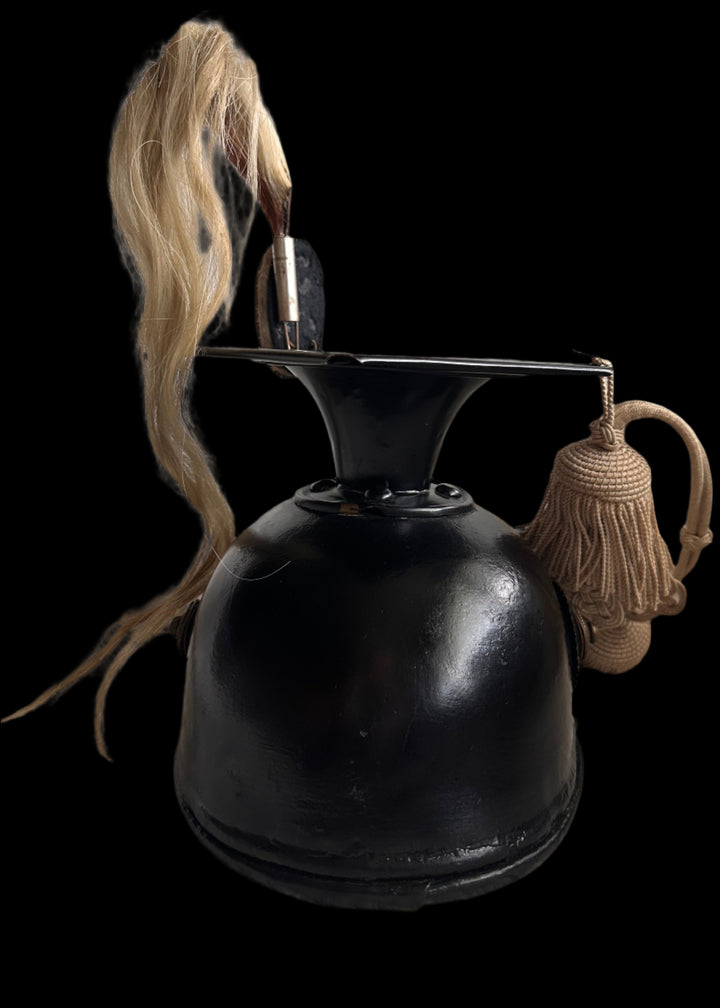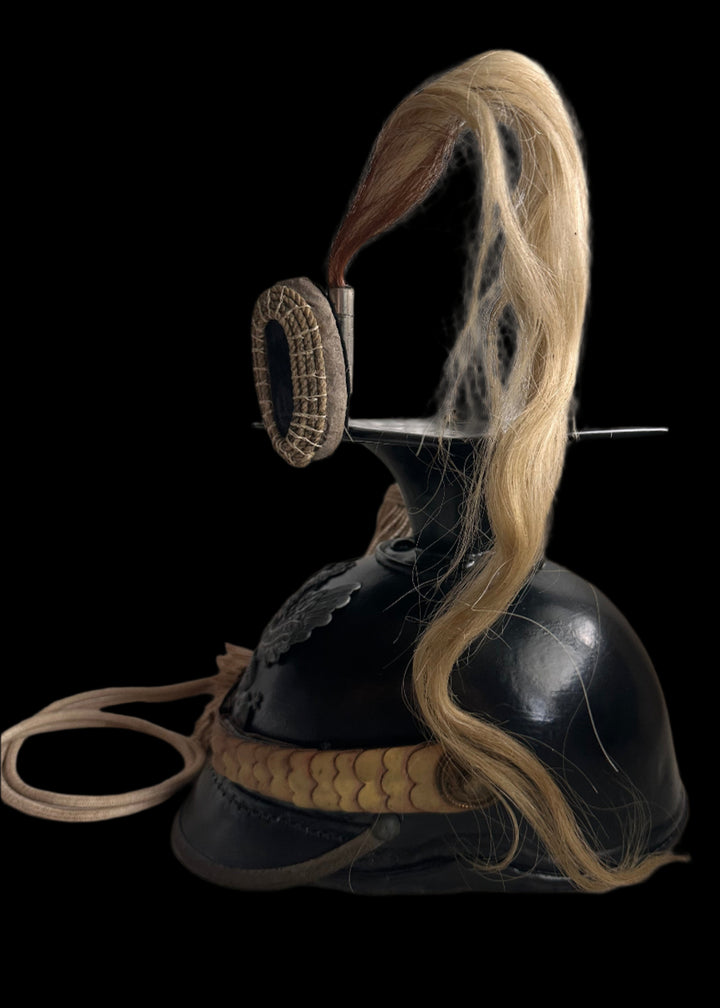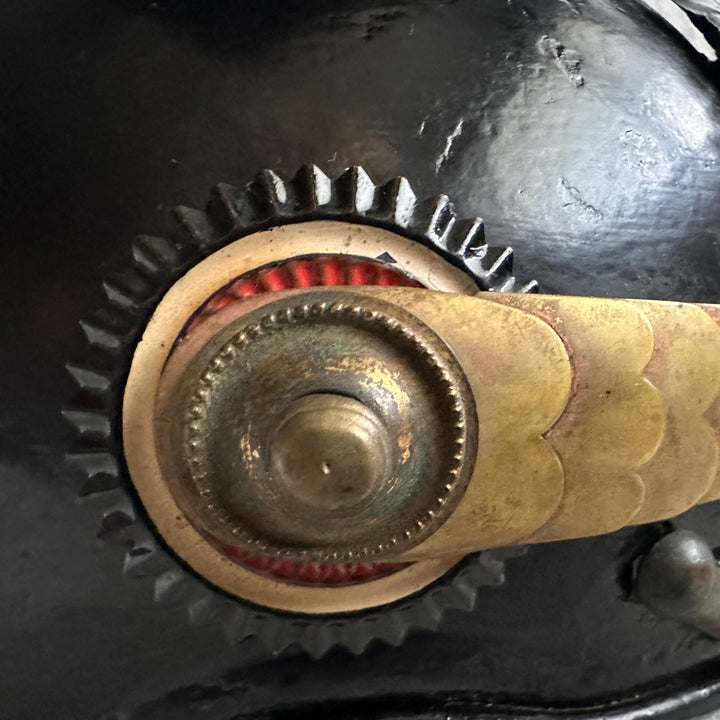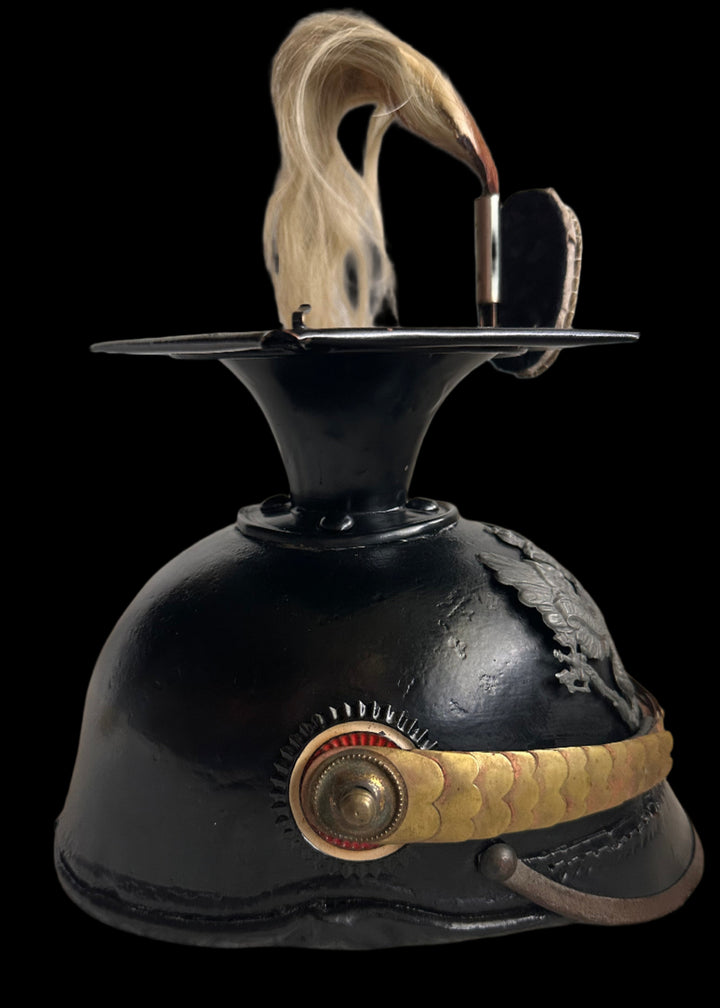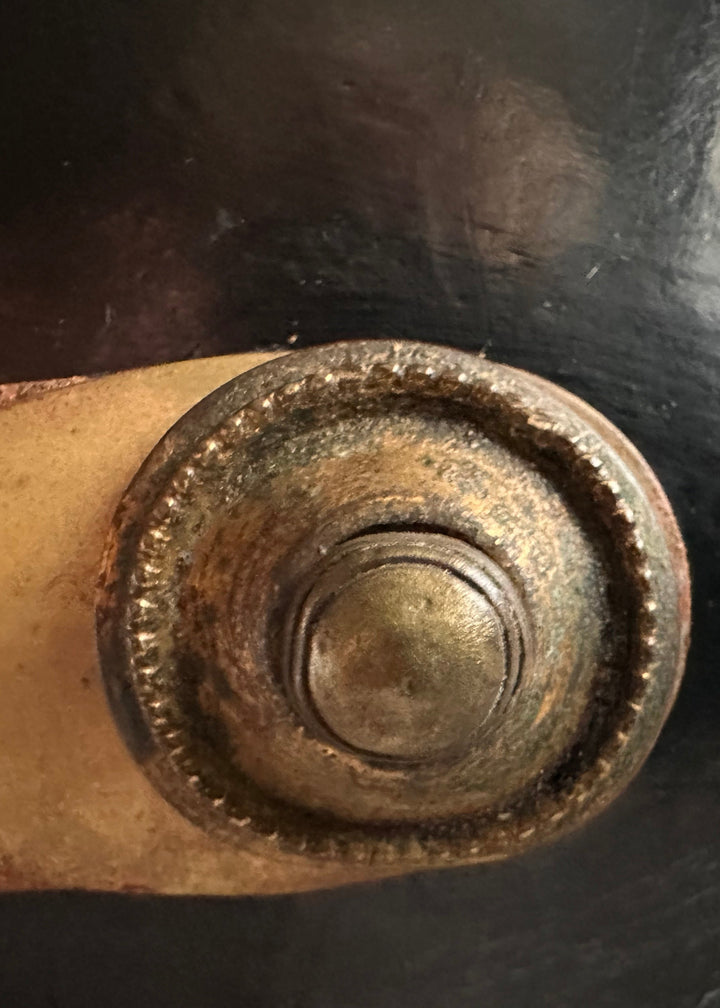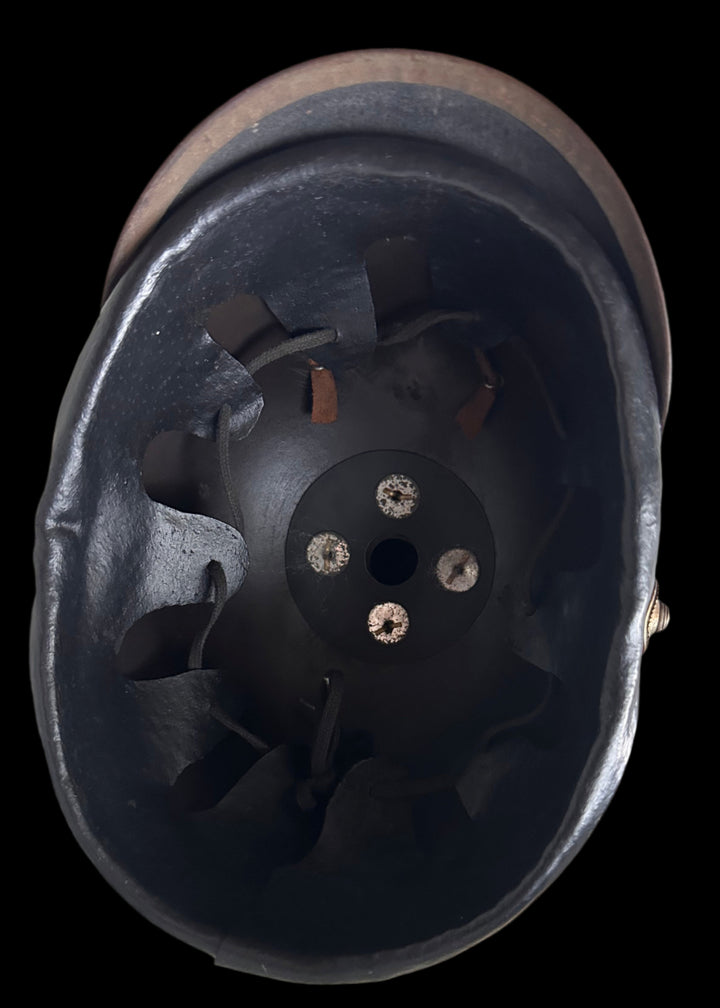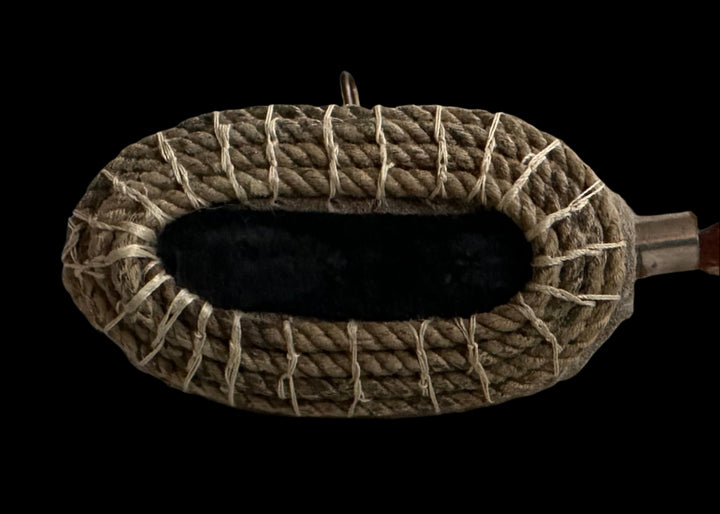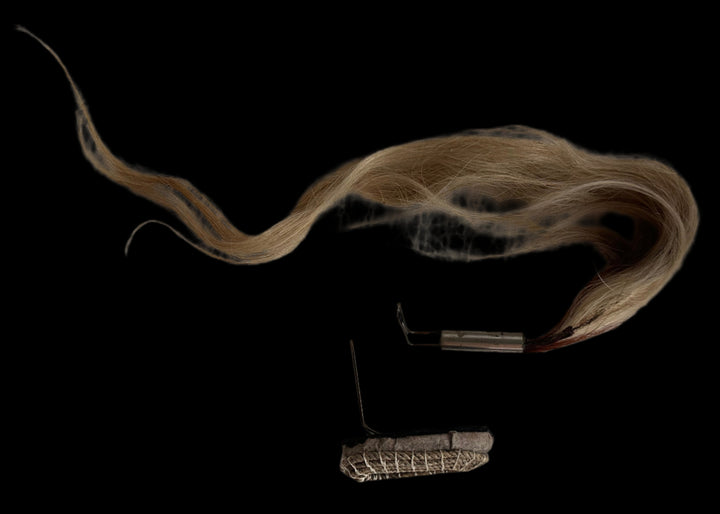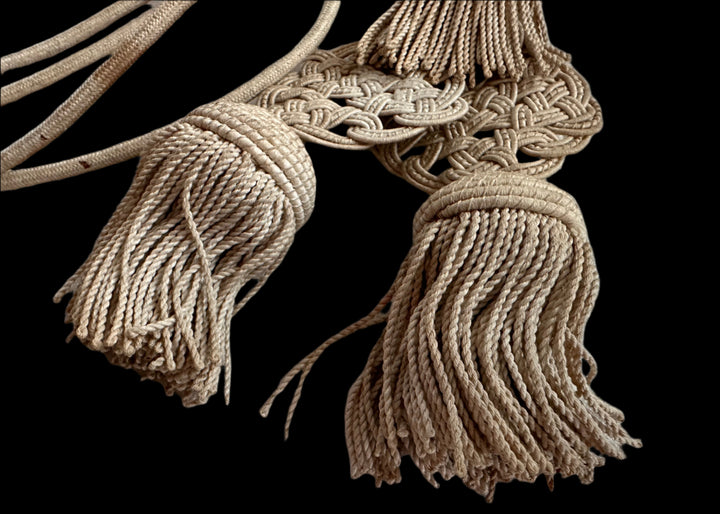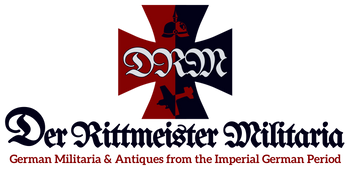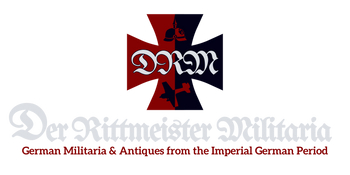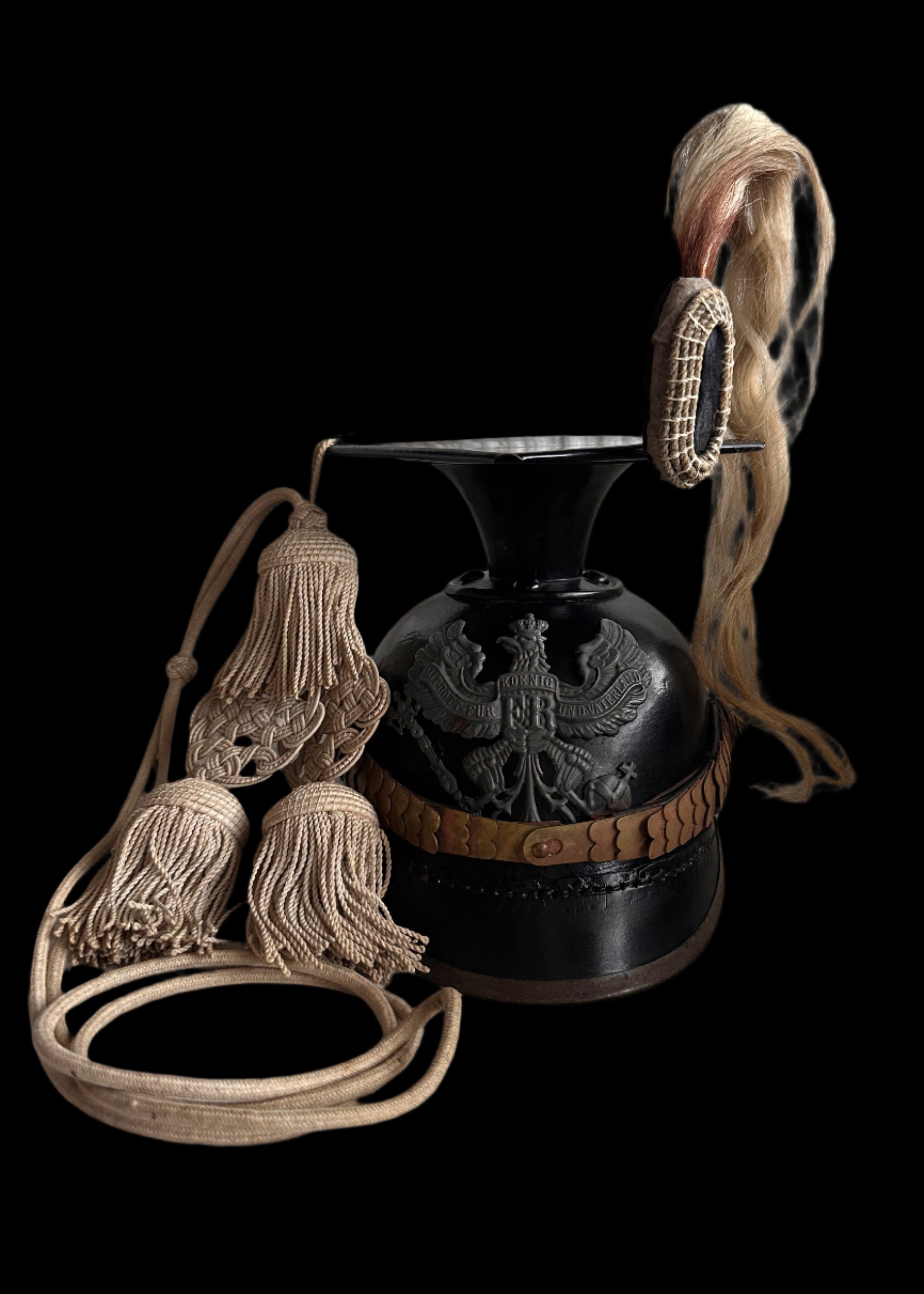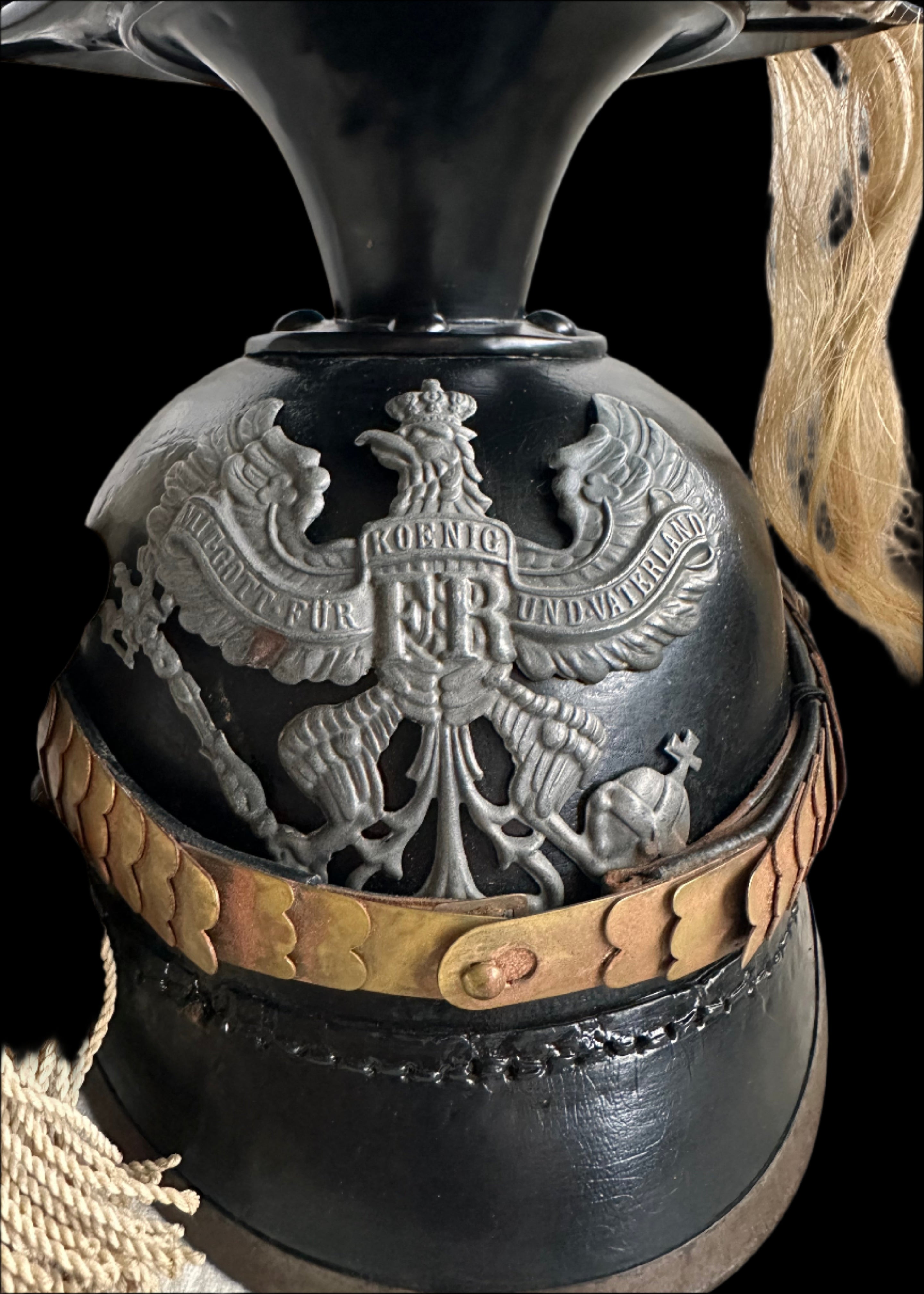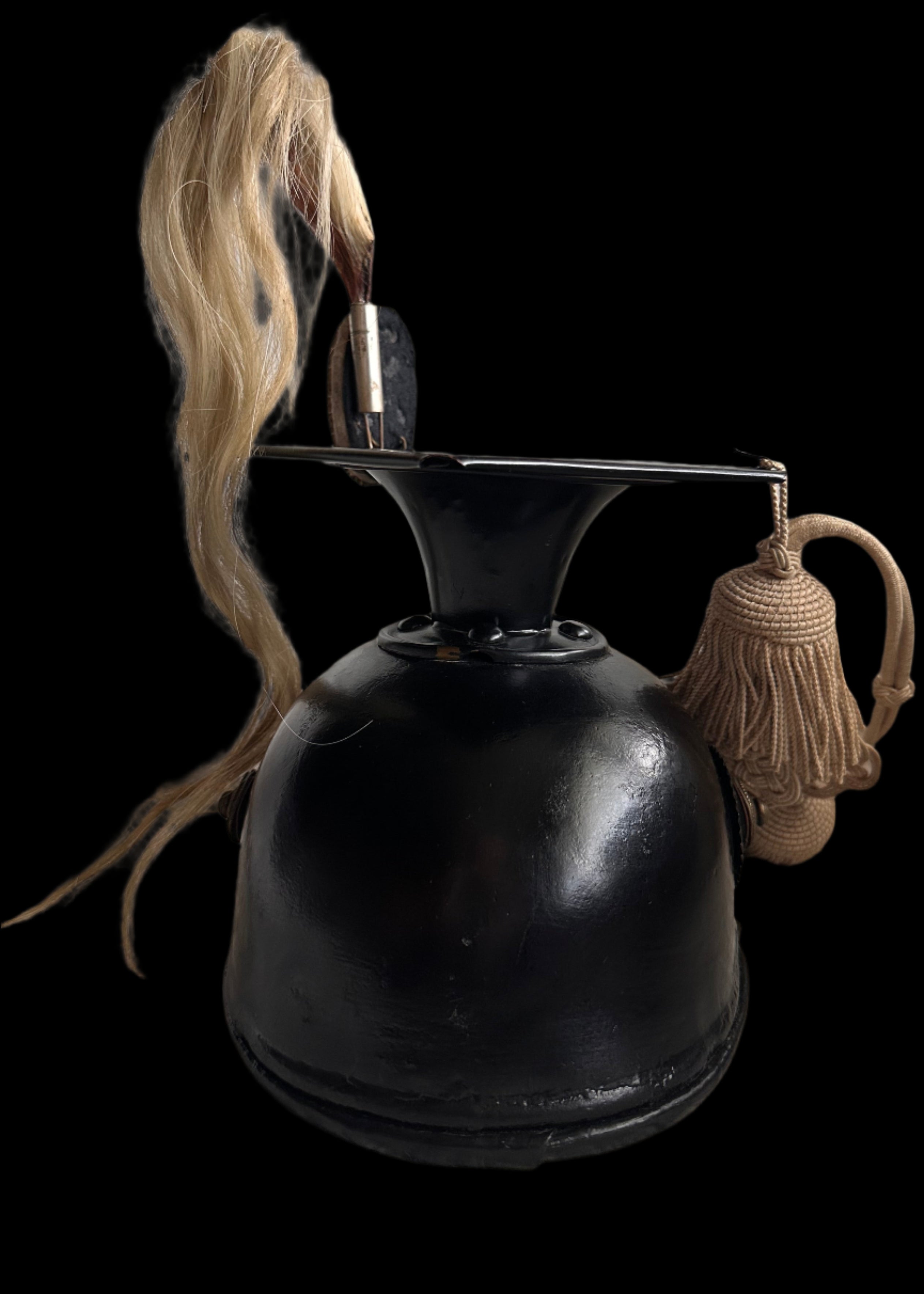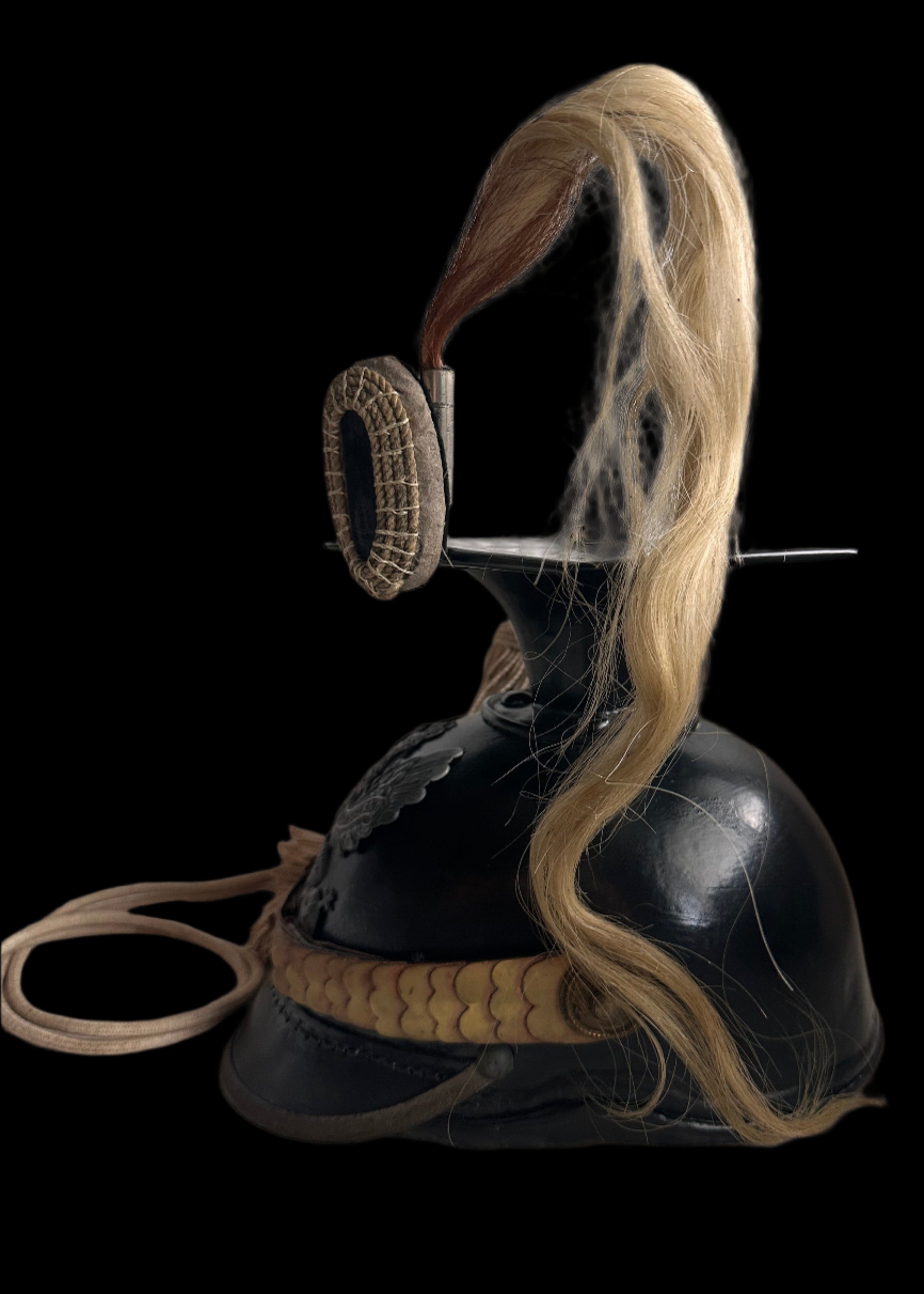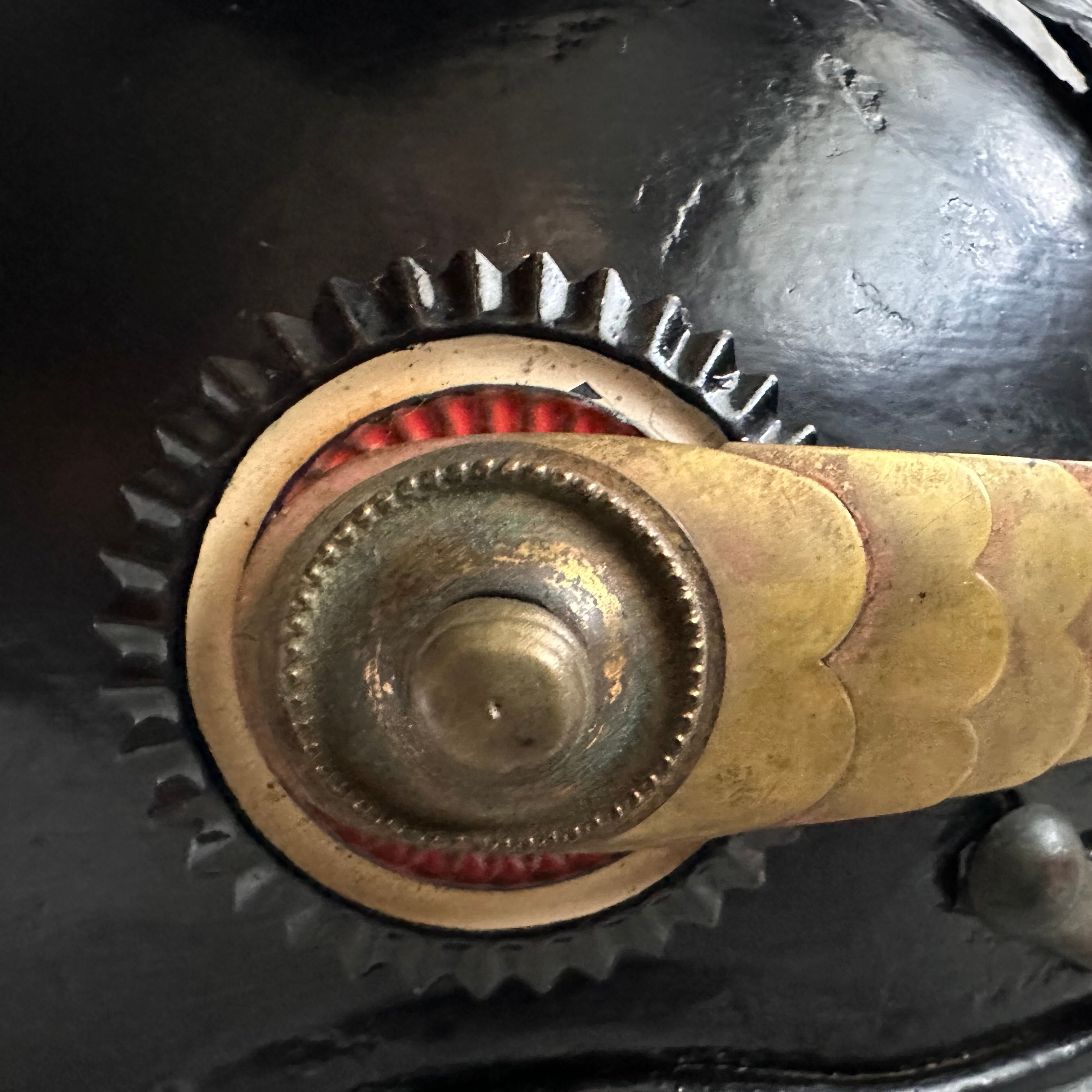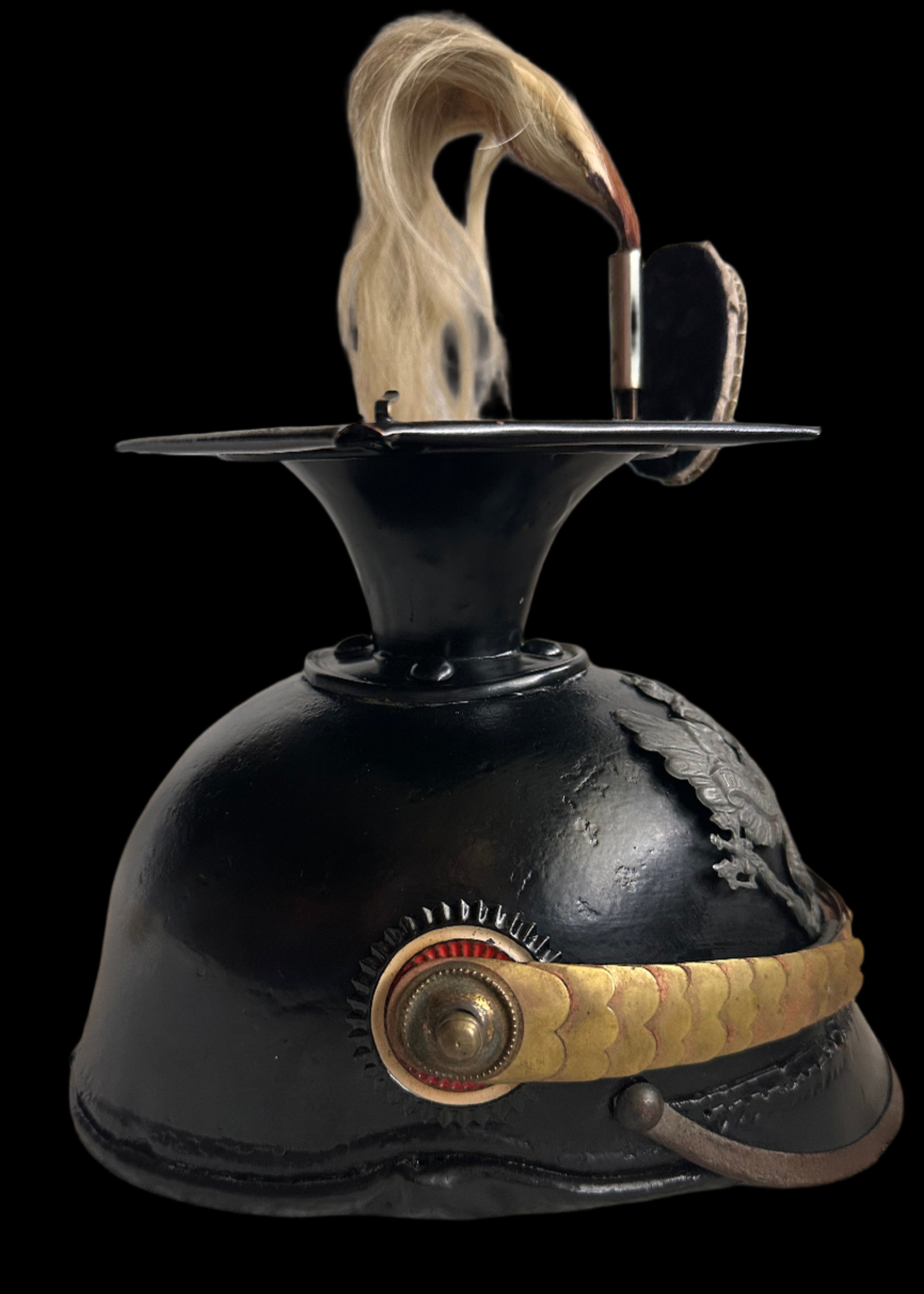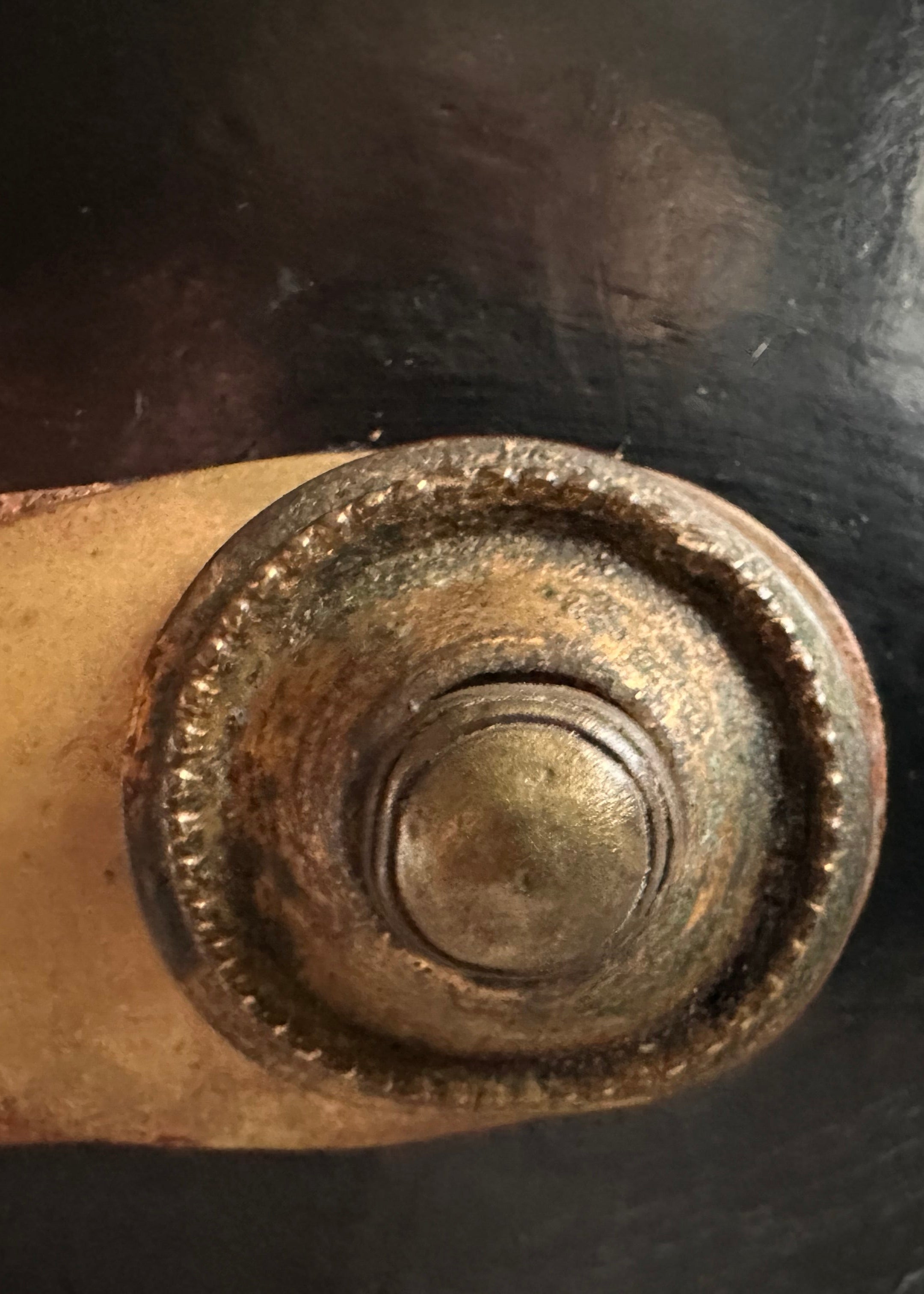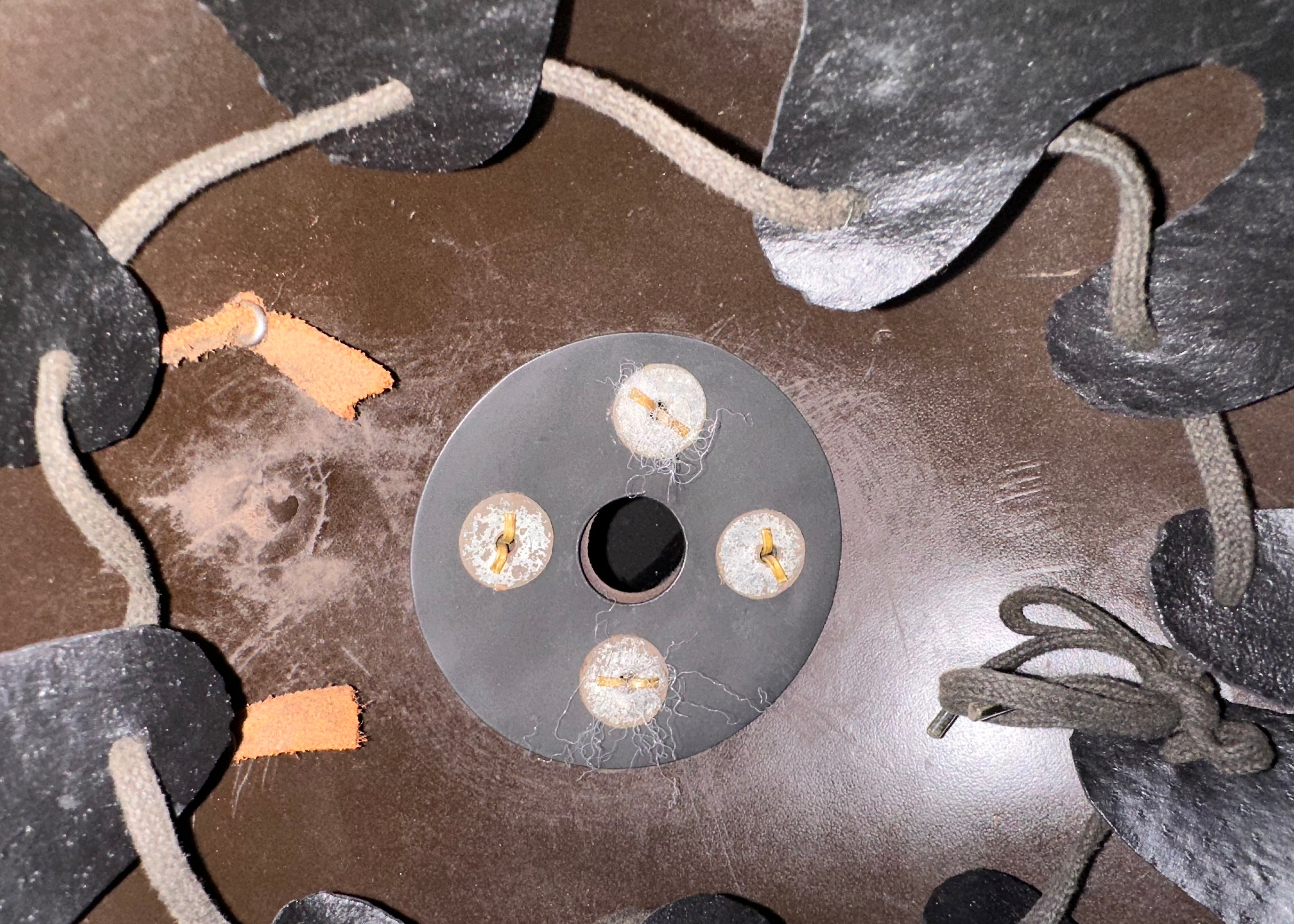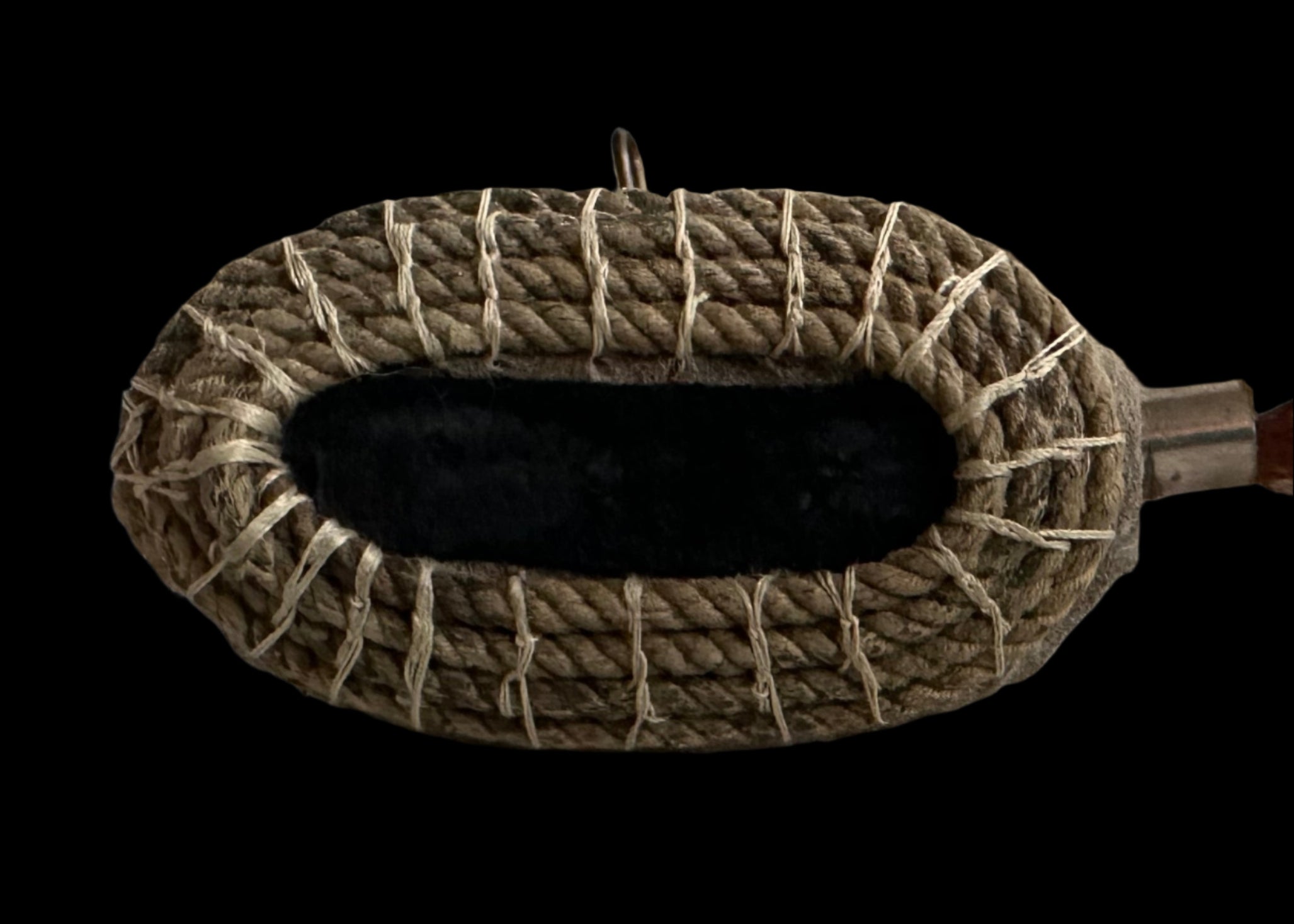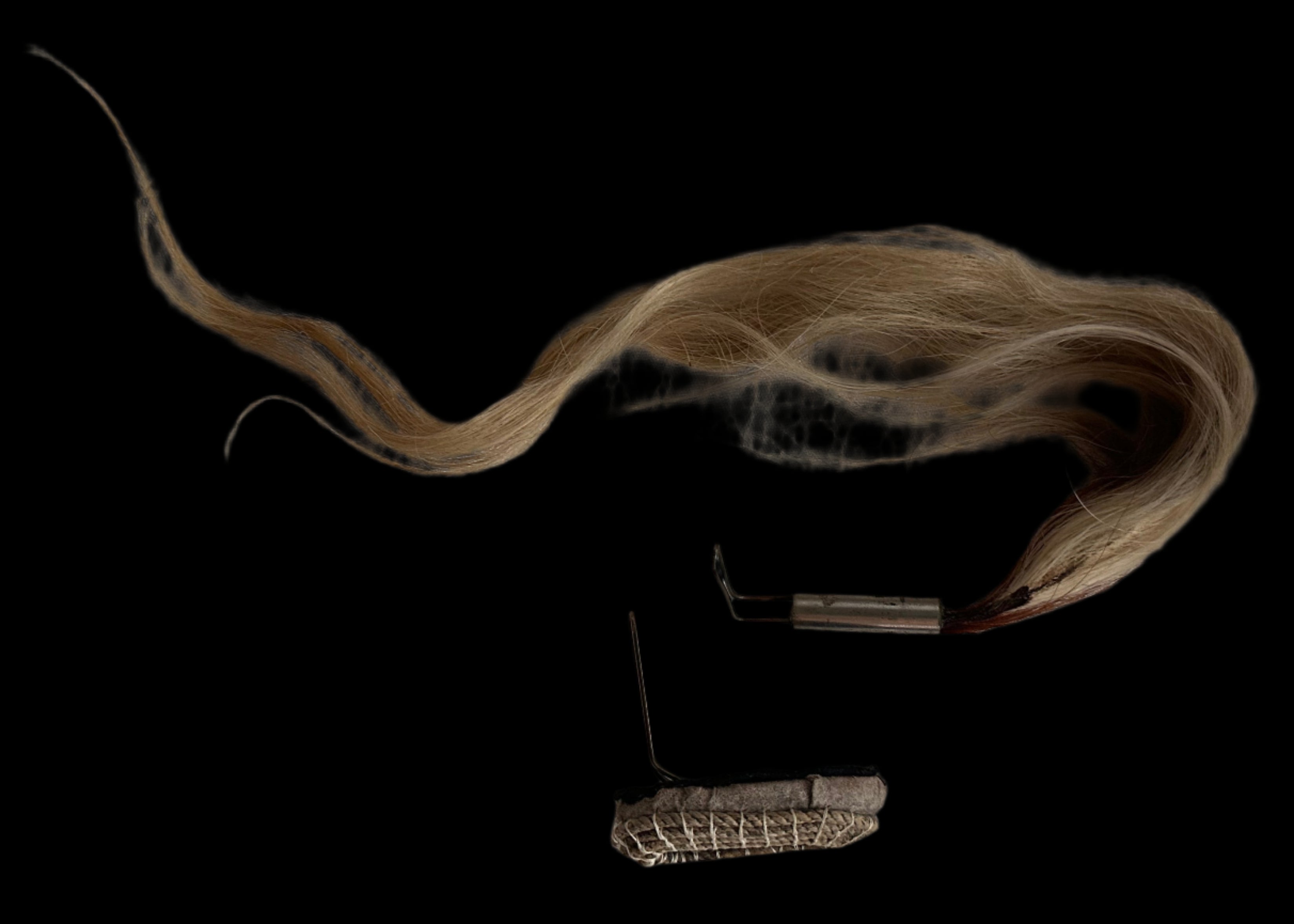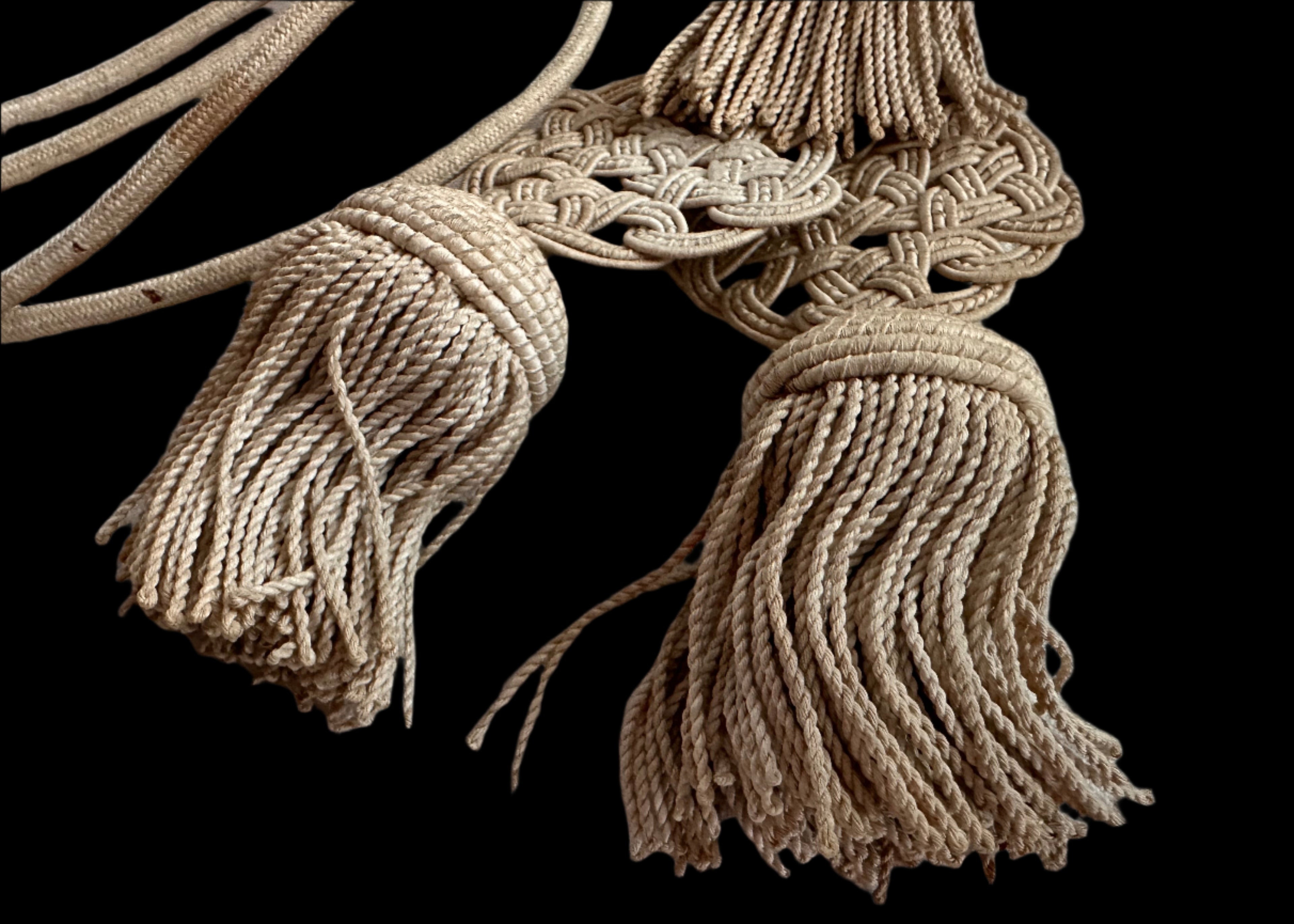Prussian EM Ulan Tschapka – Pre-1897, Line Regt, Subdued Wartime Gray Wappen
- Regular price
- $2,150.00
- Sale price
- $2,150.00
- Regular price
SKU: 33-20 XWG
This is a historically important and visually complete example of a Prussian Enlisted Man’s Tschapka from a line regiment, produced before 1897. This dating is confirmed by the helmet’s kokarde configuration: it bears only a single Prussian kokarde mounted on the right side of the mortarboard. The national kokarde was not introduced until 1897, making this helmet an excellent early-war or pre-war piece.
The helmet features the distinctive black-lacquered metal mortarboard top atop a pressed black leather body, all characteristic of enlisted Ulan headgear. The form is tight and square, with no distortion or separation at the corners. Affixed to the front is a correct Prussian enlisted eagle wappen, finished in subdued wartime gray—a non-reflective coating adopted during WWI to reduce battlefield visibility. The eagle features the “FR” (Friedrich Rex) cypher and carries scepter and orb, with outstretched wings and the motto scroll: Mit Gott für König und Vaterland.
The interior liner is the standard enlisted leather type, complete and showing moderate wear consistent with age and service. On the left front corner of the mortarboard is a feldgraues Abzeichen—a field-gray cloth insignia sewn atop a black velvet base. The velvet suggests that decorative trim or embellishment may once have surrounded the Abzeichen, now lost to time. This insignia anchors the helmet’s original Fangschnur (parade cord), which is still attached and complete—a highly desirable survival, especially on enlisted helmets. This further underscores the helmet’s authenticity, ceremonial role, and rarity.
A natural horsehair parade plume is mounted in the proper socket behind the Abzeichen. The plume shows mild toning from age but remains securely affixed and full-bodied. Its presence, along with the Fangschnur, confirms this tschapka was retained for ceremonial or garrison use during the war rather than frontline service.
While tschapkas in untouched officer parade configurations are more commonly encountered in collections, enlisted examples—especially in this condition, with wartime modifications, pre-1897 kokarde configuration, and original parade accessories—are rarely seen.
CONDITION:HISTORICAL CONTEXT:
Leather body structurally sound with minor age wear
Black-painted metal mortarboard top intact, corners tight
Subdued wartime gray Prussian enlisted wappen, original mounting hardware
Standard enlisted leather liner complete with all tongues and drawstring
Feldgraues Abzeichen on black velvet base; decorative edge likely missing
Original enlisted Fangschnur present and fully attached
Horsehair parade plume shows light aging but remains secure and full
This tschapka was worn by an enlisted cavalryman of the Prussian Ulanen—the light lancer regiments inspired by Polish military tradition. The helmet’s construction and features place it prior to Germany’s adoption of standardized dual kokarden in 1897, while its wartime-gray Wappen hints at later adaptation or continued use during the First World War. The presence of the feldgraues Abzeichen, Fangschnur, and plume all confirm this helmet was retained for parade or ceremonial duties. Enlisted tschapkas in such complete and correct condition are increasingly scarce and offer collectors a tangible link to both the pageantry and evolving practicalities of the Imperial German cavalry tradition.
From the private collection. It has been carefully preserved in climate-controlled conditions and never offered previously on the open market.
